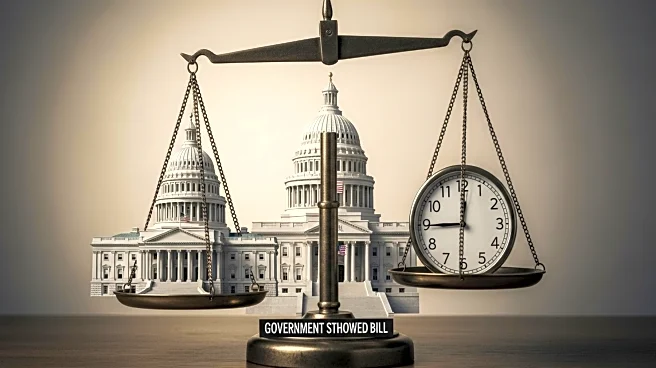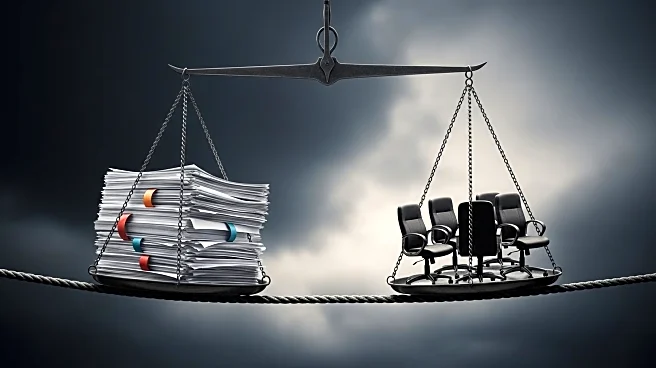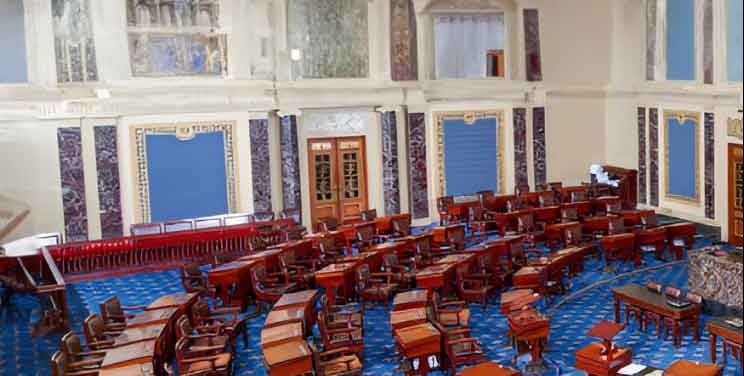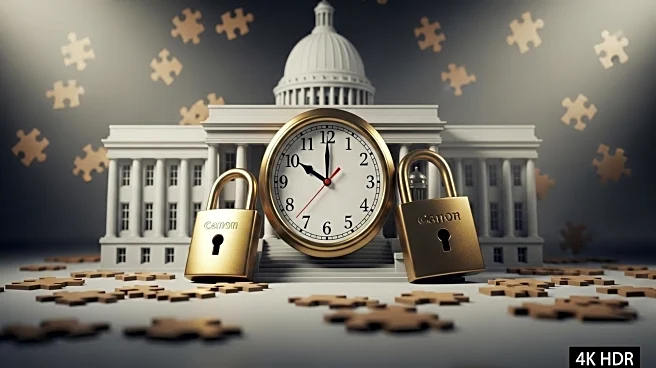What's Happening?
The U.S. government is experiencing a shutdown, leading to confusion and uncertainty among federal workers. Traditionally, during shutdowns, non-essential workers are furloughed, while essential workers continue without pay. However, the current situation under President Trump's administration is different, with fewer workers being furloughed than expected. This has led to speculation that the administration may be using the shutdown to permanently reduce the federal workforce. The White House has indicated that decisions on layoffs could be imminent, and some agencies, like the patent office, have already begun layoffs. The uneven application of the shutdown is evident, with some services like the IRS remaining operational, while others, such as national parks, are affected.
Why It's Important?
The handling of the shutdown by the Trump administration could have significant implications for the federal workforce and government operations. By potentially reducing the number of furloughed workers, the administration might be setting the stage for permanent job cuts, which could reshape the federal workforce. This approach raises concerns about the future of public services and the stability of government operations. The uncertainty and lack of clear communication have left many federal employees anxious about their job security. Additionally, the political maneuvering during the shutdown, with blame being placed on Democrats, highlights the deep partisan divides affecting governance.
What's Next?
As the shutdown continues, federal workers and agencies are awaiting further instructions and clarity on their status. The administration's decisions in the coming days will be crucial in determining the extent of workforce reductions. Political leaders in Congress are also under pressure to resolve the funding impasse, but partisan disagreements have stalled progress. The situation remains fluid, with potential for significant changes in federal employment and service delivery depending on the administration's actions and congressional negotiations.
Beyond the Headlines
The current shutdown strategy may have long-term implications for how future shutdowns are managed and the role of the federal government. The potential use of impoundment powers by President Trump to withhold funds could set a precedent for executive control over budgetary decisions, challenging the traditional balance of power between the executive and legislative branches. This could lead to legal and constitutional debates over the limits of presidential authority in budgetary matters.











